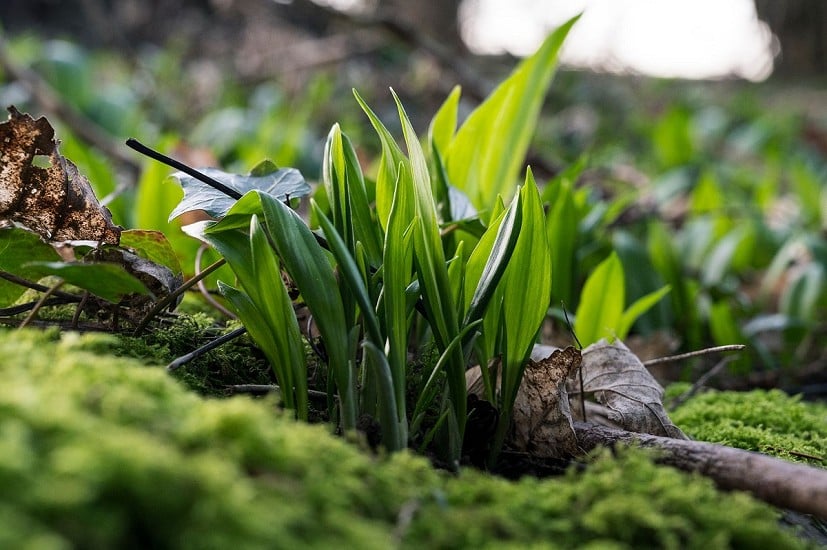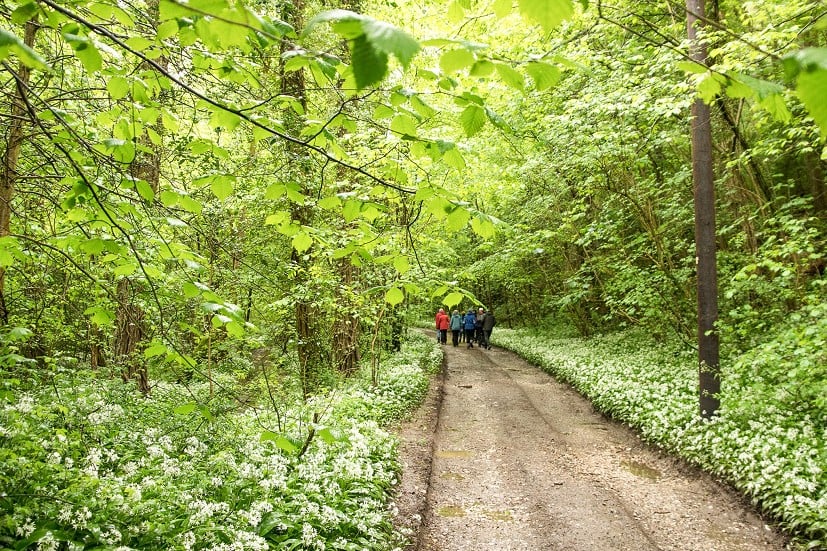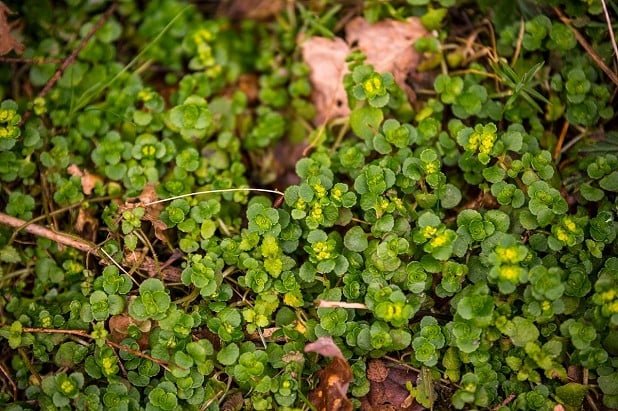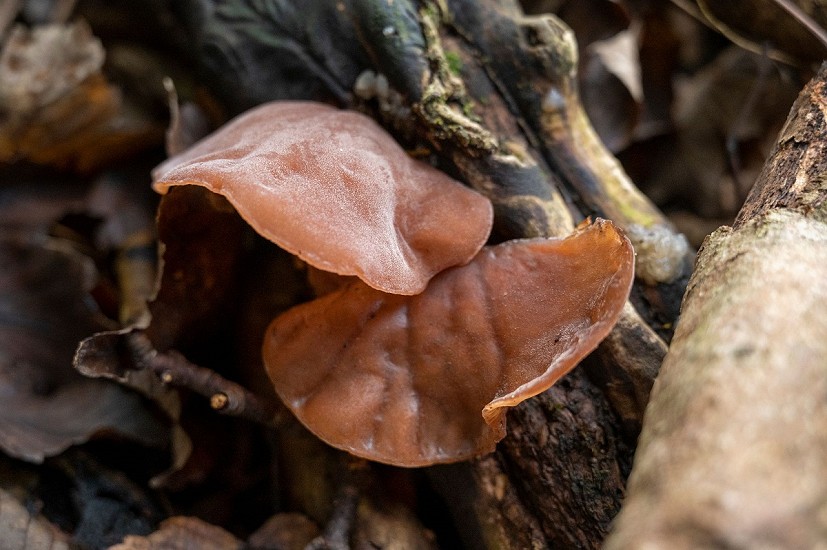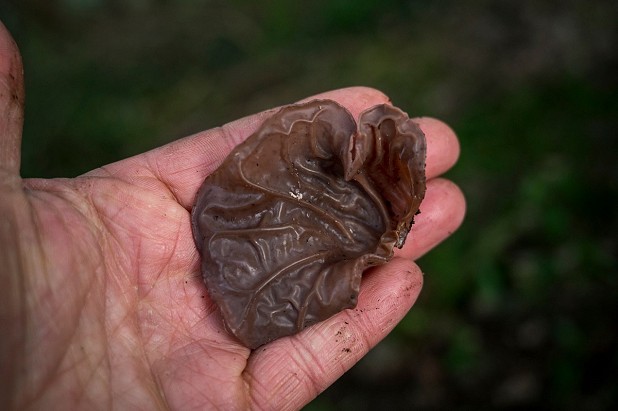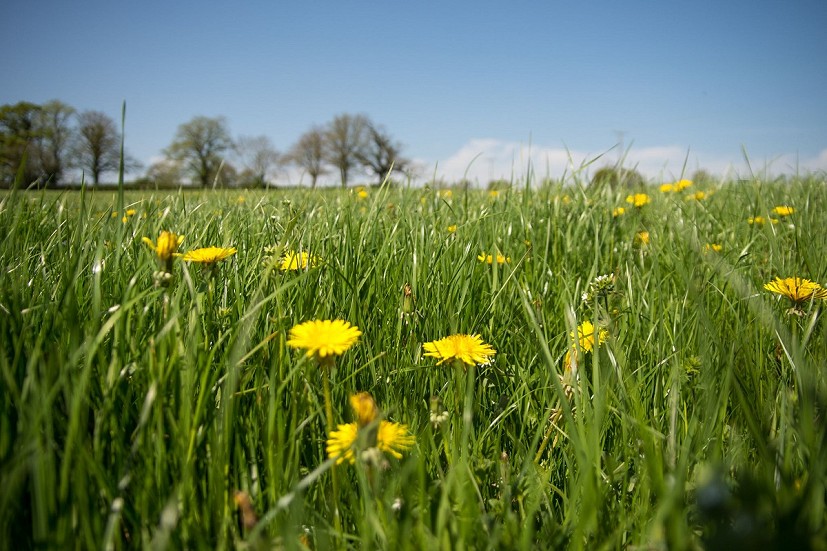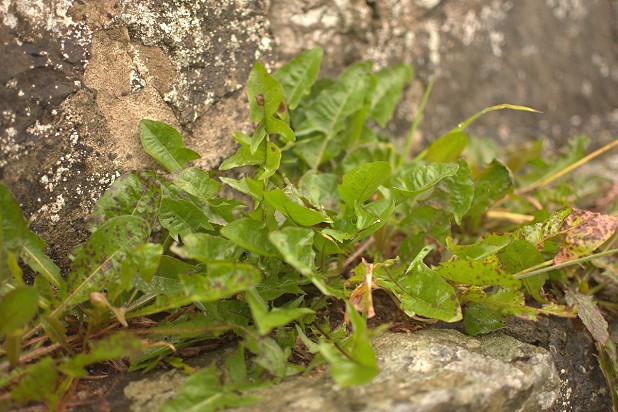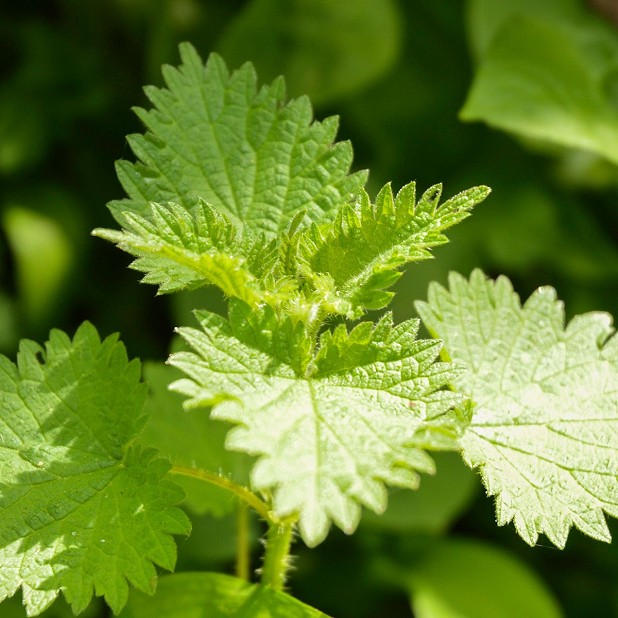Food for Free: Early Spring Foraging
Thanks to Coronavirus we're looking at the prospect of staying local through a second spring. To keep things fresh and enjoy the green spaces on your doorstep in a different way, how about a spot of living off the land? Foraging for edible plants in your local woods, hedgerows and even city parks puts a novel slant on the daily walk and offers a tasty way to get close to nature. Release your inner Ray Mears, with bushcraft expert Richard Prideaux.
You might think it's a bit early in the year for this foraging lark. No berries, none of those huge brown mushrooms that people sell to posh restaurants. Not even any chestnuts. But free food can still be found, if you know what you're looking for.

Foraging for food 'midst the shrubbery existed as a concept long before it was adopted by the eco-leaning middle classes. It is the bedrock of who we are as a species. Our brains evolved through hundreds of thousands of years to process the information required for wandering around looking for things to eat, avoiding things that want to eat us and deciding what to do with everything else. At a time when we are often looking for ways to improve our mental health and wellbeing – maybe we should look to those activities that our brains are already programmed to respond to?
Foraging doesn't have to be a grand undertaking involving armfuls of identification books and elaborate recipes – if you are confident that you can identify a young Hawthorn leaf then you can go outside, right now, and start picking them from the hedge along the edge of the footpath.
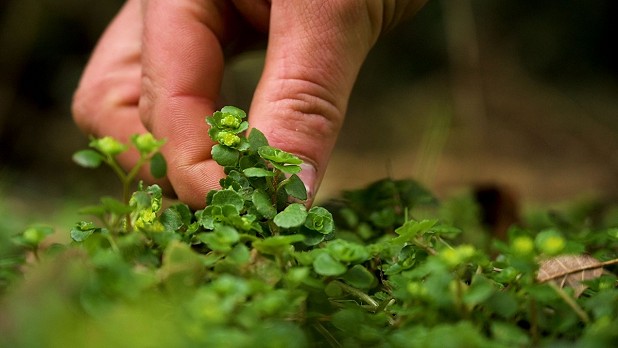
It does not need to be some exotic plant or some famed ingredient - in fact (ecologically speaking) it's better if it is something common, ordinary and everyday.
There are missed opportunities when you limit yourself to only hunting down wild edibles in the summer and autumn. There is plenty out there – you just need to put in a little more effort.
The species listed below are not an exhaustive list of what is available in the UK at this time of year, and I could easily list at least a dozen more. If you are unsure of the identification of anything you find then I urge you take a good wild plant or fungi identification book along with you. There are plenty of inexpensive and reliable guides out there, but I would recommend choosing one that is aimed at identification of wild species rather than something written purely for foragers.
Foraging Law and Safety
Staying safe
It is quite possible to poison yourself or your companions when foraging in the UK. However, if you are sensible and scrupulous in your identification of what you harvest then you will find it fairly difficult to eat something harmful.
Always:
- Be confident in how to identify each species, and what the dangerous look-a-likes might be.
- Be wary of collecting plants near busy roads, farmland where chemicals or slurry has been sprayed or other sources of contamination.
- Be prepared to discard or ignore species where you cannot be certain what they are – sometimes they just don't look like they do in the guidebooks.
The legal stuff
There is no such thing as 'the foraging law' in the UK. There are, however, several passages and sentences scattered through half a dozen various acts and documents that do refer to the collection and use of wild plants and fungi.
Essentially it comes down to: what you are collecting, where you are collecting it from and what you intend to do with it.
It is illegal, throughout the UK, to:
- Collect wild plants for commercial sale without the permission of the landowner
- Dig up or uproot plants without the permission of the landowner, whether for commercial use or not
- Collect from a cultivated plant without permission of the landowner (e.g. taking apples from an orchard)
- Collect, damage or disturb a protected species
- It is also often illegal to remove plants from SSSIs, some nature reserves or other protected sites, even if you are the landowner.
Wild Garlic – Allium ursinum
Let's start with something easy and versatile. This pungent green plant starts to show itself from January onwards - especially in sheltered areas of warm, wet, ancient broadleaf woodland.
This plant has attracted several regional names, from the imaginative Stinking Nanny or Stinking Onions to the more common Ramsons. That word stems from the Old English word 'hrmsa' and the Scandinavian/Germanic 'ram'. The pungent, unmistakable scent of massed ranks of this plant makes it the likely source of the same word appearing in place names – Ramsey Island, Ramsbottom, Ramsgreave, Ramsholt etc. Even over here in North Wales we have the valley of Crafnant just north of Betws Y Coed – stemming from the Welsh title for this species – Craf y geifr.
All parts of the plant are edible, but in these early spring months you will probably want to make the choice between throwing the young leaves into a salad or processing the more mature specimens in soup, pesto or even using them as an equivalent of a vine leaf.
A word of caution – the very common and toxic species Arum maculatum (Lords and Ladies, Cuckoo Pint, Arum Lily etc) can be found in the same soils and habitats as Wild Garlic and the young leaves can look very, very similar.
Opposite Leaved Golden Saxifrage - Chrysosplenium oppositifolium
The yellow-green 'mats' of this oft-overlooked species can be found from late February onwards, often growing in soils on the edge of watercourses. The upper stem and leaves can be eaten raw (once washed) in salads, or thrown into a stir fry. The flavour is slightly peppery at first but soon becomes milder and closer to cucumber or pea shoots.
When collecting plants from the edge of water you should give some thought to potential contamination in the water, and the several species of deadly toxic plants that can be found sitting malevolently on the banks of rivers and streams (such as Hemlock, Water-Dropwort, Deadly Nightshade etc).
Wood Ear - Auricularia auricula-judae
A species of gelatinous, tree-dwelling mushroom that has a history of unfortunate names. Now most often called Wood Ear or Jelly Ear, this fungus has the appearance and consistency of a large, brown jelly sweet. The flavour is akin to a slightly peppery miso soup, with some subtle earthy tones.
This is a particularly common mushroom and can be found almost exclusively on dead or dying Elder tree branches, with few lookalikes. The 'ears' can be gently pulled from the branches and either lightly pan-fried or dried for crumbling into stews, broths or other dishes. If you treat it a little like tofu and allow it to take on the flavours of what it is cooked alongside then you won't go far wrong.
The more adventurous may wish to try this; steep the mushroom flesh in rum then dip into melted dark chocolate, for an alcoholic, fungal, Turkish Delight.
Hawthorn leaves - Crataegus monogyna
This native shrub is ridiculously common in the British landscape, and the leaves have been used as a 'poverty food' in times of hardship for centuries. It is claimed by many that the consumption of the leaves will promote the feeling of satiety, and that although it may not deliver tremendous nutritional benefit at least you won't feel as hungry.
There are two edible components with Hawthorn – the leaves, and the berries – but you will be waiting a few months before you can make use of the latter.
The leaves are at their edible best in their first few months, particularly when the tight clusters of new leaves are just bursting out from the stems. They can be harvested by hand and eaten straight from the hedge, or gathered for consumption in salads. There are even a few recipes that make use of the unique, almost nutty flavour of the leaves – notably 'May Pudding', which involves steaming the leaves with bacon inside suet pastry.
The unopened buds of Hawthorn can look at a glance like those of Blackthorn – but with Blackthorn (Prunus spinosa) flowers will open before the leaves, whereas the branches of Hawthorn will sprout leaves long before they show their blooms.
Dandelion - Taraxacum officinale
There are some species that can usually be hunted down all year round, due to their hardy nature and ability to root themselves in the patches of soil near the urban heat islands of towns and villages. The humble Dandelion, along with Stinging Nettle, are one of those reliable species.
The leaves are best used either uncooked or very lightly steamed – but only after being washed to remove the residue of urban existence. The relatively delicate leaves of Dandelion do not fare well in the frying pan or stew pot – they quickly break down into a green mush.
The leaves have a slightly bitter taste, which tends to be stronger in the smaller, tougher leaves that survive through Winter.
While being a relatively strong diuretic there is no part of the Dandelion plant that will make you wet the bed – despite what we teased our friends or siblings with as children. Or the numerous alternative common names that suggest that it's true…
Nettle – Urtica dioica
When I first started teaching people about foraging and wild food I would have to fight through some scepticism when it came to eating Stinging Nettles – but a decade or more of TV shows, blogs and even commercial products featuring Nettle leaves has helped move it from "urgh, why would you eat that?" to "ah yes, that's the one that you can use as spinach isn't it?"
Young Stinging Nettles pack one hell of a sting compared to their loftier Summer equivalents, but the chemical concoction that causes the sting is quickly broken down when heated in a pan. They are best harvested before they flower in mid-summer as they then develop crystals of calcium carbonate called cystoliths – not the best thing for healthy kidney function.
If you treat the young, fresh leaves of Nettle as a substitute for spinach you won't go far wrong in terms of recipes, flavour and consistency. A nettle lasagne is surprisingly good…
Other species available in early Spring:
- Dock leaves
- Lesser Celandine
- Scarlet Elf Cup
- Chickweed
- Hairy Bittercress
- Cleavers
- Garlic Mustard
About Richard Prideaux
Richard Prideaux is the owner of North Wales outdoor skills training and activity business Original Outdoors, teaching navigation, foraging, tracking and other wilderness skills.
